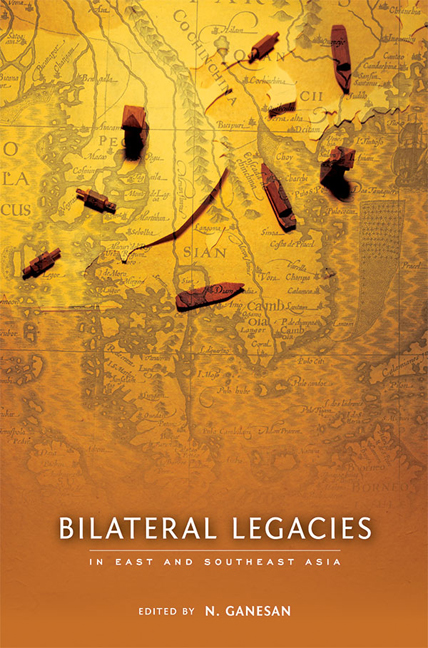Book contents
- Frontmatter
- Contents
- Acknowledgements
- About the Contributors
- 1 Historical Legacies in East and Southeast Asian International Relations
- 2 Historical Overhang or Legacy is What States Make of It: The Role of Realism and Morality in Korea–Japan Relations
- 3 The History Conundrum in Japan's Relations with China
- 4 China–Vietnam Bilateral Overhang or Legacy
- 5 Legacy or Overhang: Historical Memory in Myanmar–Thai Relations
- 6 Glorifying the Inglorious Past: Historical Overhangs or Legacies in Thai–Cambodian Relations
- 7 Comparing Bilateral Overhangs or Legacies in East Asia
- Bibliography
- Index
5 - Legacy or Overhang: Historical Memory in Myanmar–Thai Relations
Published online by Cambridge University Press: 19 May 2017
- Frontmatter
- Contents
- Acknowledgements
- About the Contributors
- 1 Historical Legacies in East and Southeast Asian International Relations
- 2 Historical Overhang or Legacy is What States Make of It: The Role of Realism and Morality in Korea–Japan Relations
- 3 The History Conundrum in Japan's Relations with China
- 4 China–Vietnam Bilateral Overhang or Legacy
- 5 Legacy or Overhang: Historical Memory in Myanmar–Thai Relations
- 6 Glorifying the Inglorious Past: Historical Overhangs or Legacies in Thai–Cambodian Relations
- 7 Comparing Bilateral Overhangs or Legacies in East Asia
- Bibliography
- Index
Summary
History has often been used and misused by statesmen and political leaders to serve their national, regime or personal interests. Historical lessons are, rightly or wrongly, employed to guide the nation's domestic and foreign policy. In countries with nation-building projects, history is presented, in different formats, with a particular nationalist discourse to inform the general public of their roles and duties and to imagine their nations through lenses of a specific socio-political context. In many cases, a particular historical juncture serves as the basis for creating collective memories, shaping perceptions of self and others, framing issues and prescribing particular courses of action. In the introductory chapter to this book, N. Ganesan conceptually defines historical overhang as “a negative perception that derives from historical interactions and subsequently becomes embedded in the psyche of a state, both at the levels of the elites and the citizen body”. In the context of bilateral relations in Asian countries, he argues that the historical overhangs or legacies have been kept alive and consciously cultivated and embellished in order to make them more durable and invoke emotional responses.
In Myanmar, in terms of framing a nationalist discourse, the most important historical juncture is the period of British colonial rule from 1885 to 1948. For several hundreds of years, under different dynasties, yet on more or less the same area of land, Myanmar had remained an independent polity. At one stage, Myanmar under King Bayint Naung (1551–81) extended its influence over most of present-day mainland Southeast Asia. King Sinphyu Shin (1763–76) of the Konebaung dynasty was famous for his victories over Qing troops in four military encounters (1765–69) and his subjugation of the Kingdom of Ayutthaya in 1767. Beginning with the defeat and the loss of coastal provinces in the first Anglo–Burmese War (1824), followed by yet another defeat and the loss of lower Myanmar in the second Anglo–Burmese War (1852), Myanmar eventually lost its independence in 1885. This was the most humiliating moment for the very proud people of Myanmar. Therefore, the anti-colonial struggle or national liberation movement has been the epitome of Myanmar's historiography.
- Type
- Chapter
- Information
- Bilateral Legacies in East and Southeast Asia , pp. 107 - 137Publisher: ISEAS–Yusof Ishak InstitutePrint publication year: 2015

